In the wake of a transformative push for green and sustainable alternatives to traditional fuel-powered vehicles, electric vehicles (EVs) are rapidly moving from the sidelines to the fast lane. As it stands, the electric vehicle industry is now a powerhouse valued at an astounding $287.36 billion, and it shows no signs of hitting the brakes. With more than 20 million electric vehicles cruising along the world’s highways and byways, it’s clear that the era of the EV is upon us. These remarkable vehicles are not just embodiments of innovative engineering and design but are also pivotal in our collective pursuit towards a greener and more sustainable future. They represent a commitment to the environment and a statement about the kind of world we hope to leave behind for future generations.
In this era of technological marvels, you don’t have to sacrifice style or performance for sustainability. The latest electric models are sculpted for aerodynamics, crafted for comfort, and engineered for an exhilarating drive. Yet they also stand as monuments to our increasing environmental consciousness, offering a low-emission alternative that can help curb our carbon footprint and combat climate change. As we continue this journey into the age of electric mobility, we invite you to join us. Allow us to guide you through our curated list of the top 10 electric vehicles that are not only kind to your wallet but also beneficial to our precious environment. Strap in as we embark on a thrilling ride into the future of transportation, where sustainability meets performance in a harmonious blend of modern technology and conscientious choice.
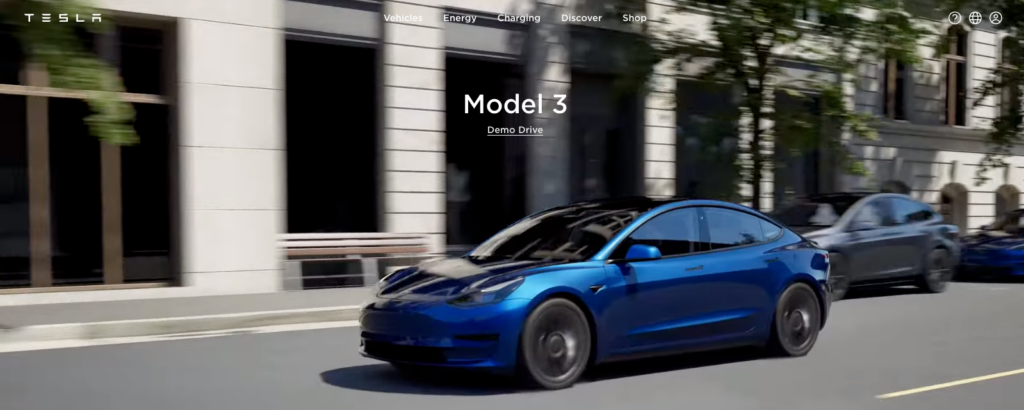
The Tesla Model 3, now with a powerful 57.5 kWh battery, offers you the freedom to travel up to 405 km on a single charge. It’s not just about the distance; this sleek sedan packs a punch too, accelerating from 0 to 100 km/h in a brisk 6.1 seconds. Charging is hassle-free and quick, meaning you can top up during a coffee break and be ready to hit the road again. But the Model 3 is more than just performance. It prioritizes safety with impressive ratings from Euro NCAP, providing peace of mind for both adults and children on board. And if you need to bring some extra gear or tow a small trailer for your adventure, it’s got you covered with a roomy 561-litre cargo volume and towing capacity. Available in markets such as the US, Asia, UK, Netherlands, and Germany at competitive prices, the Tesla Model 3 is a smart, stylish, and safe choice for anyone looking to step into the future with an electric vehicle. Whether you’re a family needing the space, an adventurer needing the range, or a driver craving the thrill of acceleration, it has something for everyone.
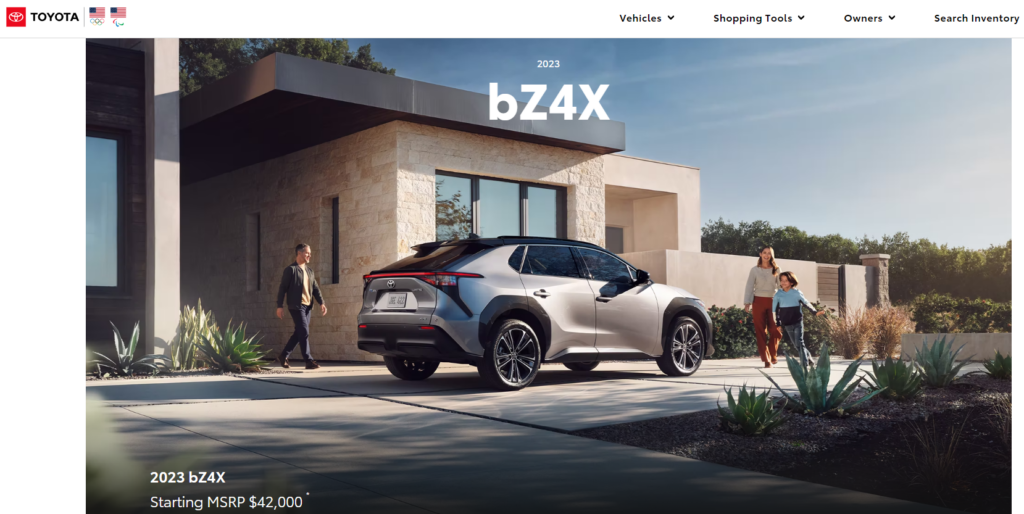
The Toyota bZ4X FWD is an electric SUV designed to push the boundaries of what’s possible. Launched in mid-2022, it houses a substantial 64.0 kWh battery, delivering a real-world range of up to 340 km. This is perfect for city commuting, weekend road trips, or even longer journeys when weather conditions are mild. Performance-wise, the bZ4X doesn’t disappoint. With 150 kW of power, it accelerates from 0 to 100 km/h in a comfortable 7.5 seconds, ensuring a spirited drive. However, it’s not just about raw power. This electric vehicle is also impressively efficient, consuming around 188 Wh/km on average, which is akin to using just over 2 liters of fuel per 100km for a conventional car. Charging the bZ4X is convenient and fast. Its maximum fast-charge power of 147 kW DC allows it to charge from 10% to 80% in just 28 minutes when plugged into a compatible charging station—ideal for short breaks on long drives. Despite its sporty performance, the bZ4X doesn’t compromise on safety. The 2022 Euro NCAP ratings show strong results, with 88% for adult occupants and 87% for children, ensuring peace of mind for all passengers. The bZ4X is also a practical choice. With a cargo volume of 452 liters, it offers ample space for luggage or shopping. The vehicle is available across US, Canada, Japan, China, and various European markets, including the UK, the Netherlands, and Germany. In summary, the Toyota bZ4X FWD combines eco-friendly driving, performance, safety, and practicality, making it an excellent choice for those stepping into the electric vehicle market.
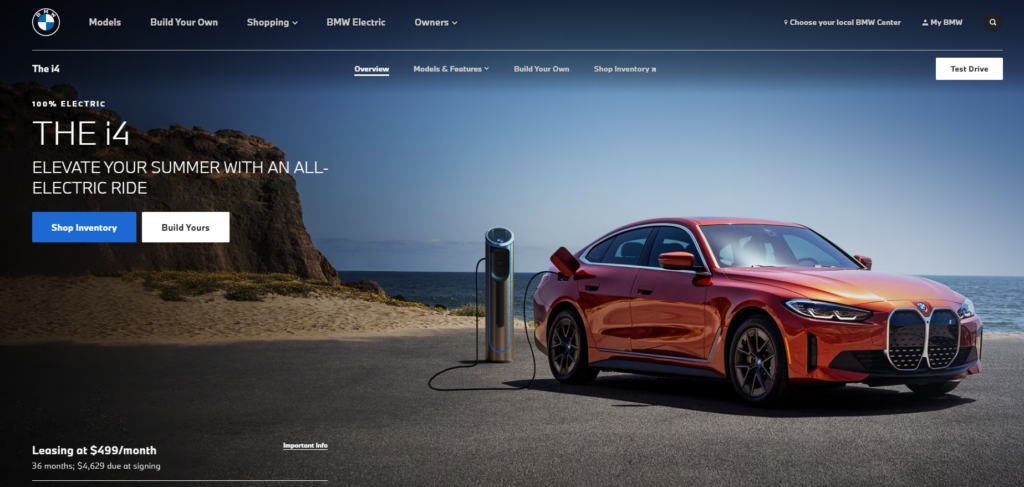
At first glance, the i4 boasts a design that is quintessentially BMW – from its iconic kidney grille to its sleek aerodynamic contours. But, beneath this familiar exterior lies a heart that’s all-electric. The i4’s electric powertrain promises impressive figures, both in terms of power output and range. Early estimates suggest a range that easily competes with many leading EVs on the market, ensuring long-distance travels without frequent charging stops. One of the major standouts of the BMW i4 is its acceleration. BMW has historically been associated with sporty and dynamic driving, and the i4 does not stray from this legacy. The sedan’s electric motor delivers instantaneous torque, allowing for rapid acceleration, reminiscent of far pricier supercars. The BMW i4 isn’t just a testament to BMW’s prowess in vehicle engineering, but also to its vision of the future. As global markets steadily shift away from fossil fuels, the i4 is a timely reminder of how traditional automakers can pivot, innovate, and thrive. The BMW i4 is not just an EV; it’s a bold statement of intent, heralding a future where sustainable mobility and driving pleasure coexist harmoniously. In essence, the BMW i4 beautifully captures the essence of modern electric mobility, where performance, luxury, and sustainability intersect. As the EV market continues to evolve, vehicles like the i4 will undoubtedly set the benchmark for others to follow.

The Hyundai IONIQ 6 Long Range 2WD, released in late 2022, is a testament to the future of electric vehicles. It’s fitted with an impressive 74.0 kWh battery, offering a remarkable range of up to 495 km. This generous distance makes it perfect for everyday commuting and spontaneous adventures alike. Performance is at the heart of the IONIQ 6, accelerating from 0 to 100 km/h in a swift 7.4 seconds, and a top speed of 185 km/h ensures an exhilarating drive. But it’s not just about power. Efficiency is key, with the vehicle consuming a meager 149 Wh/km, akin to using less than 2 liters of fuel per 100km for a traditional car. Charging is a breeze with its 800V battery system, featuring fast charging capabilities of up to 233 kW DC, replenishing the battery from 10% to 80% in a mere 16 minutes. Its innovative Vehicle-to-Load (V2L) function provides added convenience, although it does not currently support Vehicle-to-Home (V2H) or Vehicle-to-Grid (V2G) systems. Prioritizing safety, the IONIQ 6 has garnered top marks from Euro NCAP, with scores of 97% for adult occupants and 90% for safety assist, granting passengers peace of mind. In essence, the Hyundai IONIQ 6 Long Range 2WD beautifully melds performance, efficiency, and safety in an electric package, making it an ideal choice for those venturing into the electric vehicle market.
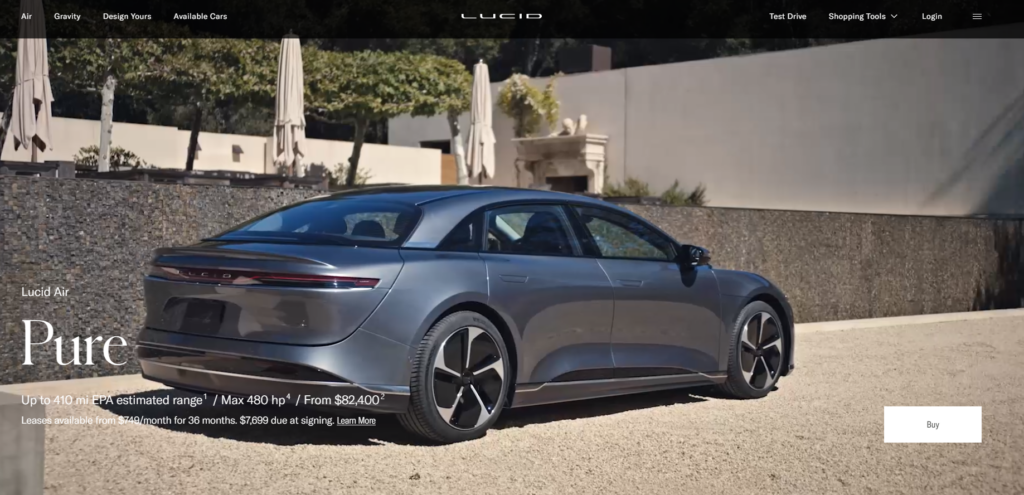
The Lucid Air Pure and Touring AWD models offer some pretty impressive specs, with prices kicking off from $87,400. These models have been designed with a balance between power, efficiency, and luxury, all of which Lucid have honed through their in-house innovations. One of the standout features of the Air Pure model is its quick charging capacity. This is thanks to Lucid’s advanced Wunderbox charging system, which makes road trips and long journeys less stressful. Moving inside the car, it’s all about comfort and a premium feel. There are 12-way heated front seats and a plush, sustainable alternative to leather known as Mojave PurLuxe. Plus, the rear seats offer a lot of legroom, which should make longer rides more relaxing for everyone. When it comes to technology, the Lucid Air models don’t disappoint. They have dual touch displays for controls and a futuristic 34-inch floating Glass Cockpit with 5K resolution, which is sure to impress. Interestingly, there’s also a facial recognition feature that adjusts settings like mirrors and seats automatically when you get in the car. So, there’s a lot to admire about these electric vehicles from Lucid.

The Hyundai Kona Electric 48 kWh is an electric vehicle (EV) comes with a usable battery capacity of 48.4 kWh which can provide a real range of up to 180 miles, though this can vary significantly based on driving conditions and style. The car’s efficiency is estimated at 269 Wh/mi. The car can accelerate from 0 to 62 mph in 7.8 seconds, and its top speed is 99 mph. Its battery is a lithium-ion type with a nominal capacity of 51.0 kWh and a usable capacity of 48.4 kWh. When it comes to charging, Hyundai Kona Electric supports Type 2 charging at home or at a destination, with a maximum charge power of 11 kW AC, which can charge the car from 0 to 180 miles in about 5 hours 15 minutes. The car also supports rapid charging through a CCS port, with a maximum power of 75 kW DC, which can charge the car from 18 to 144 miles in 43 minutes. The car also comes with Vehicle-to-Load (V2L) capability. This car’s energy consumption is estimated to be between 179 – 372 Wh/mi, depending on the driving conditions. The Hyundai Kona Electric 48 kWh emits 0 g/km of CO2, making it an environmentally friendly choice.
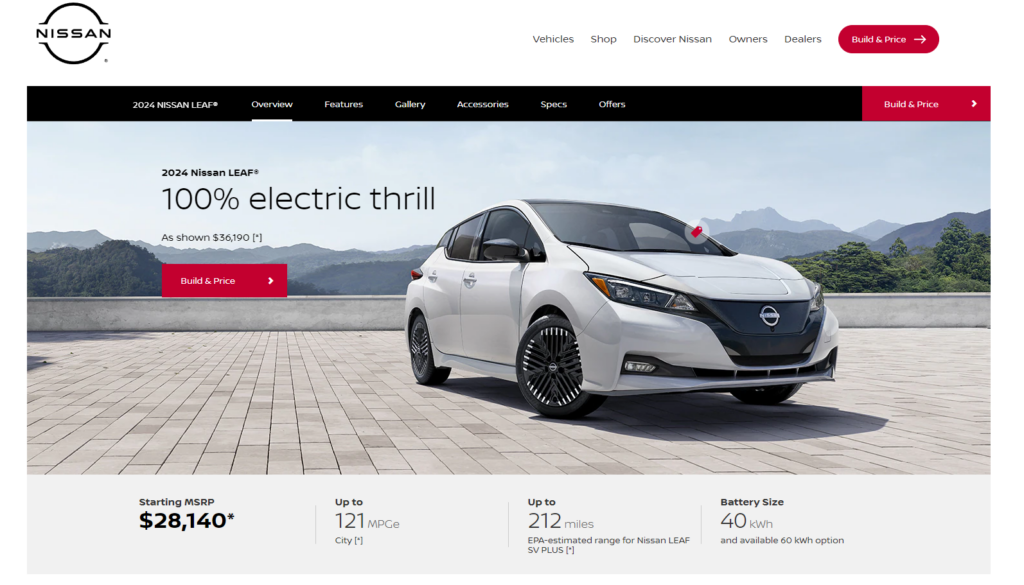
The Nissan Leaf, a compact five-door hatchback electric car, has been a popular choice among eco-conscious drivers since its introduction. This model houses a 39.0 kWh Lithium-ion battery, composed of 192 cells configured in a 96s2p arrangement. The car delivers an impressive real-world range of up to 145 miles, and efficiency measured at 269 Wh/mi. These values, however, can fluctuate between 105 to 220 miles depending on various conditions, such as driving style, weather, and road conditions. In terms of performance, the Nissan Leaf offers an acceleration of 0 – 62 mph in just 7.9 seconds with a top speed of 89 mph. This is possible due to its front-wheel-drive system powered by a motor outputting 110 kW (148 hp) and a torque of 236 lb-ft. Charging the Nissan Leaf is user-friendly and efficient. The car comes equipped with a Type 2 charge port allowing for home or destination charging with power up to 6.6 kW AC, providing a full charge in about 7 hours. The Nissan Leaf is a comprehensive package of affordability, performance, and sustainability. Whether for city commuting or for longer journeys, it promises to deliver a satisfying and eco-friendly driving experience.
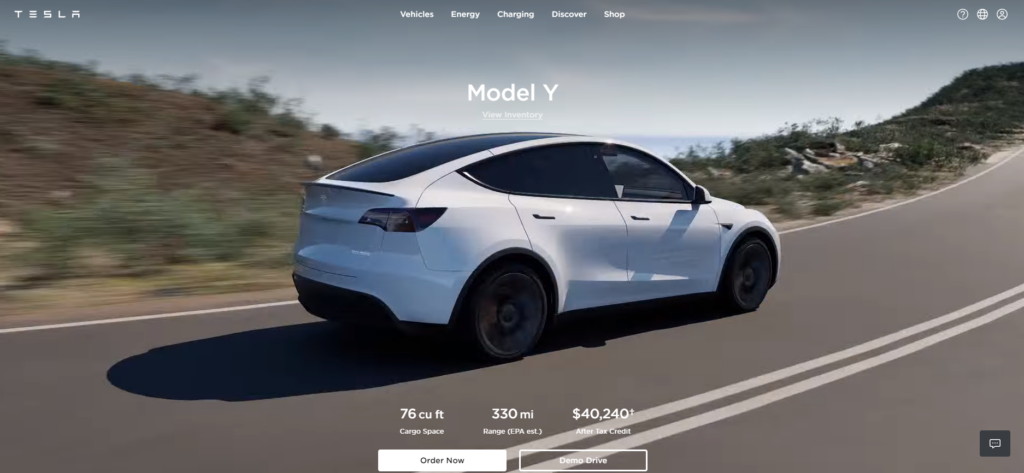
The Tesla Model Y, is a sleek, full electric vehicle with an eye-catching design. It boasts a real range of 215 miles and offers an efficient power consumption of 267 Wh/mi. The Model Y is powered by a 57.5 kWh battery, using advanced lithium-ion technology. It’s performance-focused, accelerating from 0 to 62 mph in 6.9 seconds and reaching top speeds of 135 mph. The Model Y also offers innovative charging solutions. Its home charging system can fully power up the battery in roughly 6 hours, offering convenience and rapid power replenishment. And with a Fastcharge capability, it’s well-equipped for long journeys, providing substantial mileage in minimal time. The vehicle’s safety credentials are impressive too. It scored high in Euro NCAP ratings, with a 97% score for adult occupant safety. On the eco-friendly front, the Model Y produces zero CO2 emissions, contributing positively to environmental sustainability. It’s not just a car, but a symbol of a cleaner, greener future, offering a smooth and seamless electric driving experience.
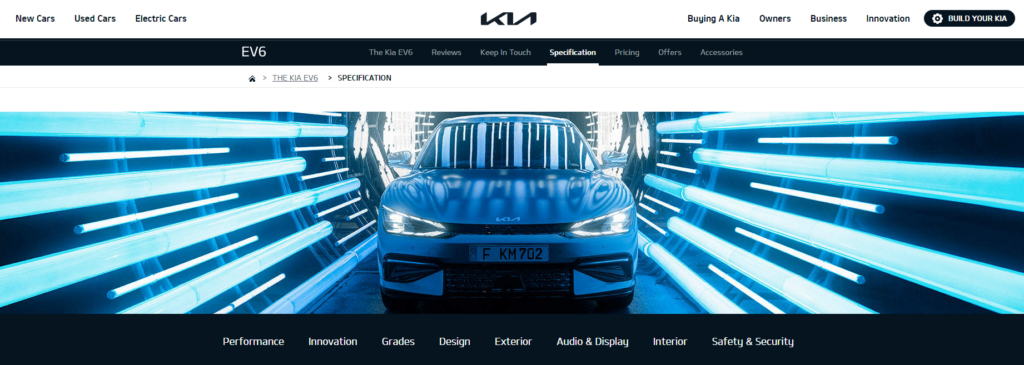
The Kia EV6 Long Range 2WD, blends performance with eco-friendly efficiency, packing a 74 kWh useable battery capacity that provides a real range of approximately 255 miles. In terms of speed, this all-electric vehicle delivers a 0-62 mph acceleration in 7.3 seconds, hitting a top speed of 115 mph. With an impressive efficiency rate of 290 Wh/mi, it proves to be a formidable choice in its segment. Charging capabilities offer a blend of convenience and flexibility. You can fully charge the Kia EV6 overnight using a home or destination Type 2 charger with a 11 kW AC output in around 8 hours. For long journeys, rapid charging through a CCS port enables a fast-charge power of up to 233 kW DC, refuelling the vehicle from 26 to 204 miles in just 16 minutes.
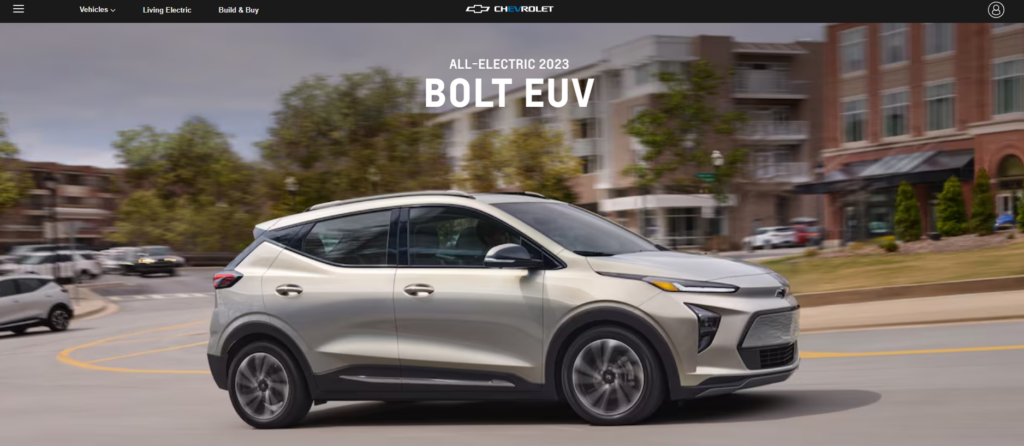
As we look to the future of automotive technology, the 2023 Chevrolet Bolt EUV is a clear standout, blending style, performance, and cutting-edge features in an affordable package. Starting at $27,800, this electric SUV offers an impressive EPA-estimated range of 247 miles, meaning you can travel further on a single charge. Inside, you’ll find a wealth of smart tech including real-time energy stats, wireless phone connectivity, and Chevrolet’s innovative Super Cruise™ hands-free driving system. Charging convenience is at the forefront with over 40,000 public charging stations and Chevy even offers installation of a Level 2 home charging outlet for eligible customers. The Bolt EUV doesn’t skimp on safety either, boasting a suite of advanced features like automatic emergency braking and lane-keeping assist. Finally, this electric marvel doesn’t sacrifice on aesthetics, with bold, SUV-like proportions and a variety of vibrant exterior colors. As we pave the way towards an electric future, the Chevrolet Bolt EUV is a compelling, eco-friendly option that’s hard to ignore.
The top ten electric vehicles listed above not only provide excellent performance and functionality but also come with a multitude of significant advantages. Here are the key benefits of owning an electric vehicle:
Reduced Greenhouse Gas Emissions: Electric vehicles play a crucial role in reducing greenhouse gas emissions, which are a leading contributor to climate change.
Zero Emissions: Unlike traditional vehicles that emit harmful gases like carbon dioxide and nitrogen oxides, electric cars produce zero emissions1, leading to cleaner air.
Health Benefits: Clean air, in turn, can help alleviate health issues related to air pollution.
Lower Carbon Footprint: Electric cars enable a reduced carbon footprint1, playing a vital role in the global shift toward cleaner, renewable energy sources.
Cost Savings: Despite a higher upfront cost, electric vehicles are more economical in the long run. They’re cheaper to charge compared to the cost of gas, and maintenance costs are lower due to fewer mechanical components.
Simpler and More Reliable: Electric vehicles are simpler and more reliable due to having fewer moving parts3, translating to fewer trips to the mechanic and less time spent on repairs.
Quiet Ride: Electric vehicles are remarkably quiet, offering a peaceful and relaxing driving experience.
Safety Features: Many electric vehicles come with advanced safety features and tend to perform well in crash tests, contributing to a safer ride.
As we progress into an era of sustainability, these benefits make electric vehicles a compelling choice for those seeking a greener, healthier, and more economical driving experience. In the next section, we’ll explore the exciting future of electric vehicles.
A remarkable evolution is unfolding on the roads of the world. The electric vehicle (EV) industry is gaining momentum, poised to disrupt the traditional automobile market. From ever-expanding model offerings to innovations in battery technology, the landscape is shifting rapidly. Forecasts predict a vibrant future for EVs. The International Energy Agency (IEA) expects some 14 million electric cars to be sold in 2023, marking a 35% increase from 20221. Goldman Sachs envisages that EVs could account for nearly all new car sales by 2040, gradually rising from 20% in 2025 to 40% by 2030. Manufacturers are catering to all kinds of consumers. Iconic brands like Tesla and Porsche are already leading the charge in luxury, high-performance EVs. Still, mainstream automakers are not far behind. Ford, Chevy, and others are planning to release electric SUVs and pickup trucks, broadening their appeal to the larger market3. The EV market is expected to expand at a compound annual growth rate (CAGR) of 21.7% through 2030. This growth is fueled by concerns about pollution, increasing government regulations, and investment in charging infrastructure, making electric cars a more viable choice for a larger segment of the population.
Technological advancement in batteries is a key factor in the adoption of electric vehicles. A study from Stanford University highlights how AI has the potential to significantly reduce battery testing times. Such innovations will improve charging time, range, and overall longevity of EVs. Automakers are also working tirelessly to increase the battery range. For example, Ford’s F-150 Lightning boasts a targeted range of 300 miles, while Chevy’s electric Silverado claims 400 miles. Financially, the total cost of owning an EV is predicted to be lower than that of a gasoline-powered vehicle soon, further spurring adoption. Government incentives and federal tax credits will also continue to play a critical role in making EVs affordable. However, for EV adoption to truly scale, the development of charging infrastructure must keep pace. While there has been growth in public charging stations, it is insufficient to meet the anticipated demand. Utilities companies are stepping in to boost the expansion of charging infrastructure. Programs like Southern California Edison’s Charge Ready Program are proving instrumental in deploying charging infrastructure and equipment, further easing the transition to electric vehicles. The future of electric vehicles is a revolution in progress, powered by innovative technology, environmental concerns, and forward-thinking policies. The road ahead seems bright, and the journey is just beginning.
Stay a while and read more posts like this
Electric vehicles (EVs) are at the forefront of creating a more sustainable and cleaner future, representing much more than mere automobiles sans gas tanks. These...
As you bask in the glory of your cutting-edge Tesla, one nagging question is lurking in your mind: "How much does it cost to charge this...
For starters, not all charging stations are the same. In fact, Tesla charging stations are classified into three varieties, each with its unique charging time and...